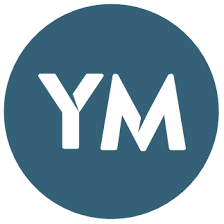Free
It's free to download
Technical
Purchase, Print and Prepare the Parts.
I purchased eight "R-28" O-Rings (38mm ID, 3.5mm Section) for the "tires". These O-Rings fit tight on the wheels, but slightly larger O-Rings may be used.
As mentioned, I've included all STL files with the components properly oriented for no support 3D printing. If you wish to create your own STL files from the included Autodesk Fusion 360 file "Windup Floating Pinion Car.f3d", remember to properly orient them on the build plate using your slicer prior to printing, and make sure to "hide" (e.g. "light bulb" off) both the O-Ring 1 and O-Ring 2 bodies of the Wheel component prior to creating the STL file for the Wheel component.
I printed the following quantities and parts at .15mm layer height with the infill percentage and materials as specified:
1) One "Axle, Gear, Floating Pinion (8, 2.2).stl", 50% infill, PLA.
2) Two "Axle.stl", 50% infill, PLA.
3) One "Frame, Left.stl", 100% infill, PLA.
4) One "Frame, Right.stl", 100% infill, PLA.
5) One "Gear, Axle (8, 2.2).stl", 50% infill, PLA.
6) One "Gear, Compound ((24, 2.2), (8, 2.2))", 50% infill, PLA.
7) One "Gear, Floating Pinion (8, 2.2).stl", 50% infill, PLA.
8) One "Gear, Pawl (24, 2.2).stl", 50% infill, PLA.
9) One "Knob.stl", 100% infill, PLA.
10) One "Pawl.stl, 100% infill, Tough PLA (PLA may be used but will provide less torque and longevity).
11) One "Spring.stl", 100% infill, Tough PLA (PLA may be used but will provide less torque and longevity).
12) Four "Wheel.stl", 50% infill, PLA.
Prior to assembly, I test fit and trimmed, filed, sanded, etc. all parts as necessary for smooth movement of moving surfaces, and tight fit for non moving surfaces. If you decide to make your own Windup Car, depending on the colors you chose, your printer model and your printer settings, more or less trimming, filing and/or sanding may be required. I carefully filed all edges that contacted the build plate to make absolutely certain that all build plate "ooze" was removed and that all edges were smooth. I used small jewelers files and plenty of patience to perform this step.
Assembly and Test.
I assembled the car as follows (refer to the photographs for proper location and orientation of the various components):
1) Slid "Knob.stl" into "Frame, Right.stl", making sure the knob rotated freely in the right frame.
2) Pressed "Spring.stl" onto "Knob.stl" while positioning the spring end over the crossmember on the right frame.
3) Pressed "Pawl.stl" onto "Knob.stl". This must be a tight fit for the Knob to remain in place.
4) Placed "Gear, Pawl (24, 2.2).stl" onto "Pawl.stl".
5) Placed "Gear, Compound ((24, 2.2), (8, 2.2)).stl" onto the crossmember on frame, right, making sure the gear rotated freely on the crossmember.
6) Pressed "Axle, Gear, Floating Pinion.stl" into "Gear, Floating Pinion (8, 2.2).stl" making sure the gear was centered on the axle. This must be a tight fit.
7) Placed the floating pinion gear assembly into the guide slot on frame, right, making sure the floating pinion gear assembly rotated and slid freely in the guide slot.
8) Pressed one "Axle.stl" into "Gear, Axle (8, 2.2).stl" such that the gear was 16.5mm from one end of the axle. This is the rear axle assembly and the gear must be a tight fit on the axle.
9) Placed the longer end of the rear axle assembly into the rear axle hole of frame, right making sure the axle assembly rotated freely in the frame.
10) Pressed "Frame, Left.stl" onto the frame, right assembly. This must be a tight fit.
11) Placed the eight O-Rings onto the four "Wheel.stl" (two per wheel). This must be a tight fit to avoid slippage and thus energy loss.
12) Pressed two wheels onto the rear axle assembly such that the outer wheel surfaces were flush with the axle ends. This must be a tight fit, and must rotate freely.
13) Pressed the remaining "Axle.stl" into one of the remaining wheels such that the outer wheel surface was flush with the axle end. This must be a tight fit.
14) Slid this wheel assembly into the front axle hole in the frame assembly, making sure the wheel assembly rotated freely in the frame assembly.
15) Pressed the remaining wheel assembly onto the remaining axle end such that the outer wheel surface was flush with the axle end, and making sure the wheels and axle rotated freely in the frame assembly.
To test the car, hold "Gear, Compound ((24, 2.2), (8, 2.2))" with one hand, wind the spring motor using the Knob with the other hand, set the car on a smooth surface (e.g. gymnasium floor, granite countertop, conference table, etc.) and if all assembly steps were successful, off it goes!
And that's how I designed, printed and assembled Windup Car.
Hope you enjoyed it!
License
Tags
Related objects
206 objects
727 Followers
Joined almost 9 years ago
My basement in Oklahoma, US
I fail when I decide to stop learning.




 Free
Free